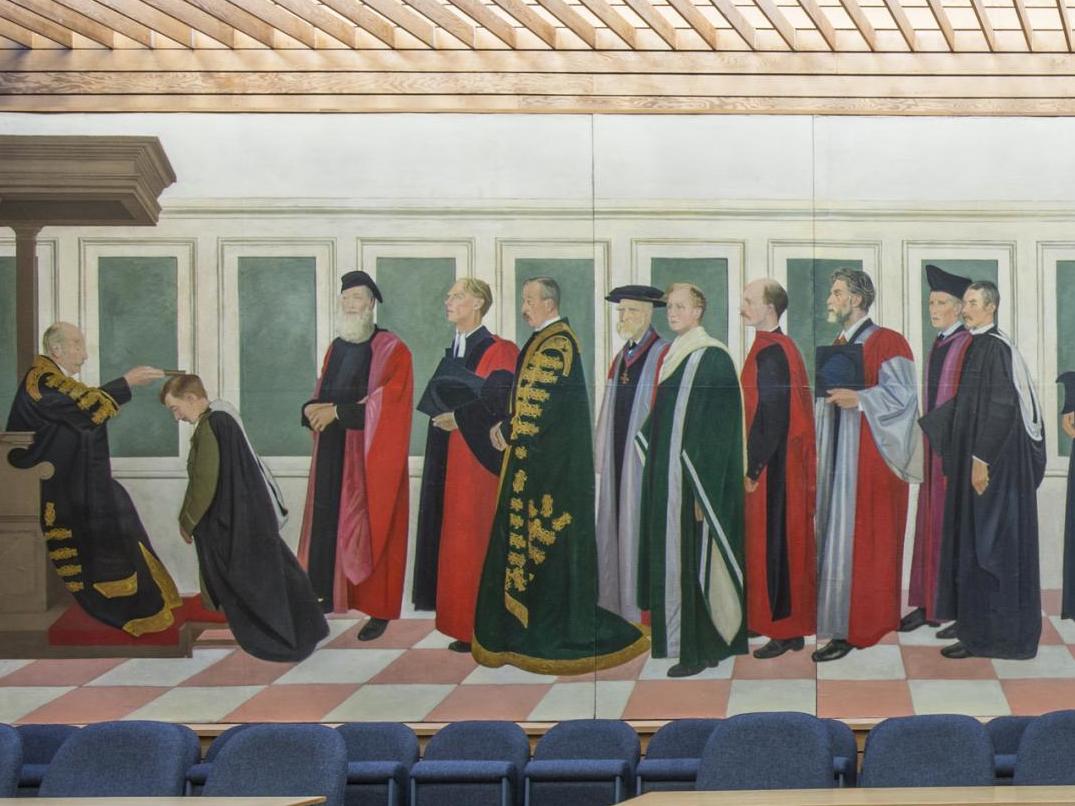Why did a student leader feel she had to resign over a tweet?
Analysis: A movement to boost diversity on university campuses risks losing momentum with off-hand comments, says Eleanor Busby


Tens of thousands of people who called for a student leader to resign over threats to paint over a university mural dedicated to First World War heroes have finally got what they wanted.
Emily Dawes, who served as president of Southampton University’s students union, has now stepped down after tweeting that she would remove, or paint over, the “mural of white men”.
Unsurprisingly, the tweet last month sparked a widespread backlash in certain circles. But nearly four weeks later, the criticism of the student leader remains strong. The petition calling for Ms Dawes to quit, signed by more than 21,000 people, is still attracting fresh signatures despite her resignation and numerous apologies for the remarks.
By criticising a painting honouring First World War heroes, just weeks before Remembrance Day, she missed the mark entirely.
Yet this is not the first time that student representatives have called out universities for displaying pieces of art which they feel do not reflect the student body in the 21st century.
In an effort to ensure people from minority groups feel represented and welcome on campus, a student-led movement to “decolonise” education has been growing at universities across the UK.
The Rhodes Must Fall campaign was a catalyst in many ways. In 2015 students at the University of Cape Town protested against a statue of Victorian imperialist Cecil Rhodes – and it was removed.
Its success inspired students across the world, including Britain, to challenge university authorities. In July this year, students union representatives painted over a famous Rudyard Kipling poem at the University of Manchester in a protest against “racist” and “imperialistic” literature.
Kipling’s poem “If” was replaced by the students’ union executive team with “Still I Rise“, by black poet and civil rights activist Maya Angelou, to better reflect the union’s values.
And some prestigious institutions – including the Universities of Oxford and Cambridge and King’s College London – have introduced more paintings of black and minority ethnic individuals following student pressure.
So Ms Dawes’ comments about the university mural in Southampton – which depicts a long queue of white men being awarded degrees – appear to have been made in light of this broader campaign to increase diversity.
However, by criticising a painting honouring First World War heroes, just weeks before Remembrance Day, she missed the mark entirely.
The general population’s strength of feeling towards soldiers who served in war is not to be underestimated. Just last month, Cambridge students who rejected a proposal to encourage the commemoration British war veterans on Remembrance Day received death threats.
Still, even if Ms Dawes’ remarks were ill thought through, should she have been forced to resign for expressing them? After all, she did not actually take any action to paint over or take down the art.
It is easy for liberal students, who are depicted as “snowflakes” by some media publications, to become targets.
But if they really want positive action over boosting diversity then they need to be mindful about the way they try to do this. An off-hand comment on social media might not be the answer.
Join our commenting forum
Join thought-provoking conversations, follow other Independent readers and see their replies
Comments